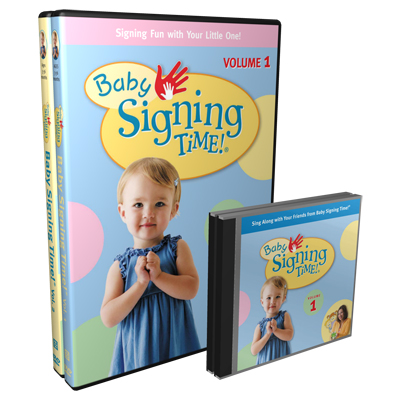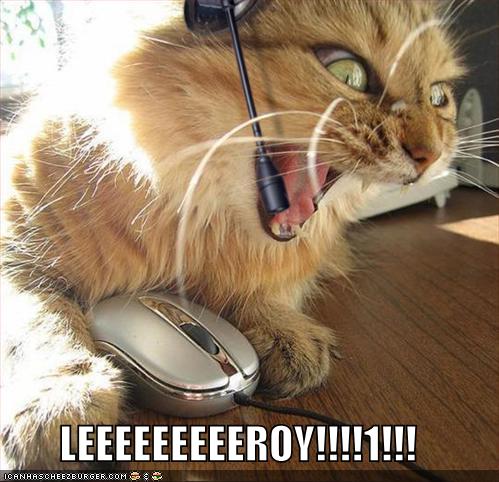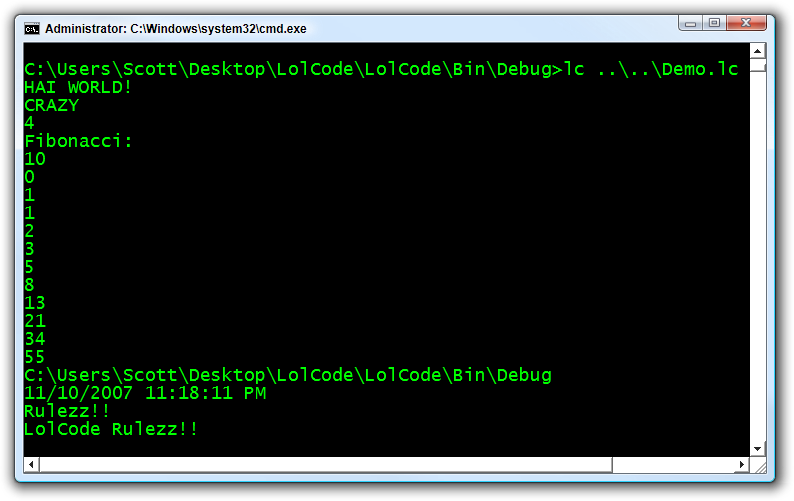UPDATE: Check out http://www.babysignlanguage.com for more info on Babies and Sign Language!
 My son is nearly two years old. He's 23 months. I suspect we'll stop counting months after he's second birthday.
My son is nearly two years old. He's 23 months. I suspect we'll stop counting months after he's second birthday.
It's always fun to be recognized at a conference and have folks ask about technology, but more and more people want to talk to me about Baby Sign Language. Most often they're folks from outside the U.S., which I think is great. I blogged about Baby Sign twice previously:
Often parents concerns are that a baby who is taught sign language will speak later or will be developmentally slowed in some way due to "confusion." Are they supposed to talk or sign?
I have found this with my own child, my brother's child and all my signing friend's children to be totally false. If anything the child begins speaking with more sophisticated phrases than one would expect.
My belief is this (remembering that I'm neither a doctor, nor a parenting expert, just a Signing Enthusiast and current father of one):
There is a window in a baby's development when they have needs, wants and feelings to express. This window might be from 6 months to 18 months or from 12 months to 2 years. It's usually at least a year long, and it's that time when your baby is "in there" but isn't able to express themselves verbally. Our goal with my son was to get involved in his head for that "missing year" and see what he had to say. For us, it prevented a lot of tantrums and early confusion about what he needed. Instead, he simply told us what was on his mind.
However, they haven't got the tools. If you listened carefully to their cries, posture and other thing I'm sure you'd find that the child was trying to get their need out, but it was either too subtle or unclear for us to see. Using Baby Signing - which is simply American Sign Language or ASL - is a way of formalizing this easily communication with your baby and letting he or she know that we're here, and we're listening.
When a child discovers that they are seen, that their opinion matters and that their parents understand them, I believe it enables and extends so many other interactions with our kids.
How To Start
A gentleman at the PNPSummit from Europe approached me to ask about Baby Signing for his 6 month old. This is the ideal time to start. The baby is just starting to get their bearings and realize that they are not alone and that there's a whole world to interact with.
Pick some basic signs, no more than 4 or 5, since you're going to be learning Sign Language as the child does. Plus, the baby's ability to learn signs will surpass your own very quickly.
To start with, we taught him: Milk, More, Eat, Dog, Mommy and Daddy. We did this from 6 months to about 9 months before we got anything. This is tip #1 - be patient. You'll do it for literally months before it'll POP one day. One day he or she will sign and they won't shut up until they move out of the house 20 years later.
He signed More one day, and the others quickly followed. The key was that we always signed while we spoke. This is important Tip #2 - teaching your child sign language doesn't mean you don't talk to them. Always talk and sign at the same time. Eventually the child will learn that talking is easier and abandon most signs. At two, my son rarely signs as he's not go the words for everything he had previously learned the sign for. However, the signs are still in his head if we need them someday.
You can buy an ASL Dictionary online, or get an inexpensive subscription to a site like HandSpeak.com that includes a video dictionary of over 2800 words. There are photo sites, but they don't quite capture the jist as the images are static. (There are also some free sites like the one at Michigan State University although it requires Quicktime and for you to click twice on the video to get it to play.)
There's also a great FREE "Signing Success Guide" here as a PDF on the Baby Signing Time site.
"Testimonials"
Many of my friends and family have taught their kids sign. For many, including all the non-American's, they were teased by family and friends - especially concerned mother's-in-law. But they stuck with it. My friend Daniel "Kzu" Cazzulino had a great experience with Baby Sign Language in Argentina:
"Just after a couple weeks signing 3 words to her (duck, drink and milk), she signed the duck! I was blown away by how fast she started with the first one, but it took another month for her to start picking up more and more signs. When she was exactly one year old (about a month after we started), I got a couple of books which tought me more techniques and approaches to signing to make it more effective. Three months later, she's able to sign: duck, drink, milk, cookie/cracker, eat, more, baby, take a bath, need heulp, hot, dog, cat, monkey, flower, shoes, hat, pain, water, sleep, silence (and clip, which Agustina uses at the kindergarten to also mean silence), dance (this one she made it up and we learned what she meant!). That's 22 words for a 15 months-old baby that can barely say Mom and Agus (her sister's nickname and the first thing she learnt to say :)). And there are many more that she understands but she's not signing yet.
Just like Scott felt, it's not just a matter of teaching her something to make her "smarter" early on. There's a new kind of connection that you can make with your baby. Aylen's face shines when she sees that we can listen to her needs and help her. She no longer cries when she's hungry or thirsty, or when she wants to take a bath. That's huge. "
Daniel as a native Spanish speaker also got an interesting sign benefit when we recommended Rachel's Baby Signing Time videos:
We bought a couple DVDs from the Baby Signing Time collection (awesome stuff) which both Aylen and Agustina love. It's playing on my TV almost every day for at least a couple hours. It teaches new signs through songs and showing other babies doing them, and it does so while pronouncing the words in english. That may sound obvious to you, but we live in Argentina, so english is not our primary language. However, both girls are now learning the words in both english and spanish at the same time! So my baby signs "baby" when you say the word in english AND spanish too! It's simply amazing.
Another good friend emailed last week when his daughter announced with sign that she needed to have her diaper changed:
"perhaps it's too soon to tell -- but we think we've had good consistent responses on the hand sign for "change me" today.
Great stuff!! [she's 9 months old now]"
Craig Andera is also huge Baby Signing Fan. He had to have patience early on though:
Just like Scott, it was initially like signing to a wall. She didn't seem to care, and she certainly didn't sign back. But I knew from my brother that it was just a matter of time, and sure enough, at about eight months, Ellen was able to mime the sign back to us. It's pretty amazing to get any communication whatsoever (other than smiling and crying) from an eight-month-old.
And Craig also sees Sign to be a good complement to an already bilingual education. ASL is recognized here by colleges as a legitimate foreign language:
It's funny for me to hear resistance to the idea. The one that really puzzles me is the "it'll slow down their speech" one. Not only is this contrary to clinical evidence (IIRC - we did the research but I no longer have the citation), but my personal experience has been the opposite. Ellen, like Z, is bilingual in verbal languages (Chinese and English), and despite that seems to have verbal capabilities comparable to her contemporaries.
Does Ellen still sign? Yes she does, but not to communicate. She communicates exclusively (and nearly endlessly :) ) verbally, but there are about five signs she still makes even when speaking. For example, she still signs "sorry" even as she says it - in English or in Chinese.
I'm really interested to hear in the comments from anyone else whose had success with teaching their infant Sign Language. It's worked great for us. We're going to teach Un-named Son #2 sign lanuage. He's due in less than two weeks!
Hosting By


 During my Friday Keynote at the
During my Friday Keynote at the 



